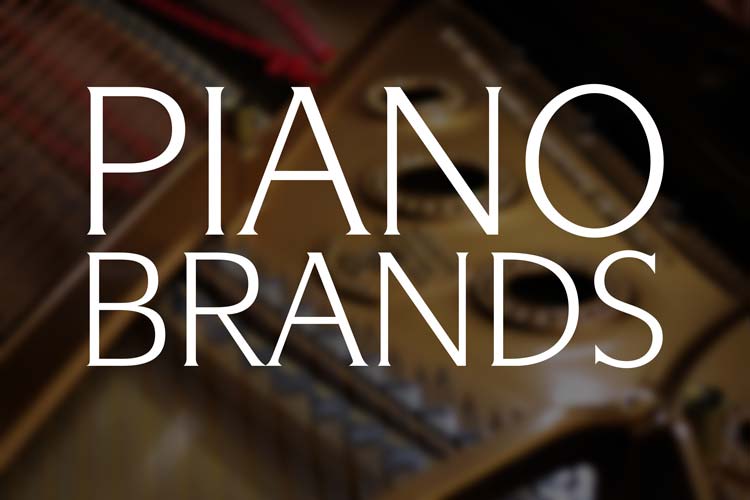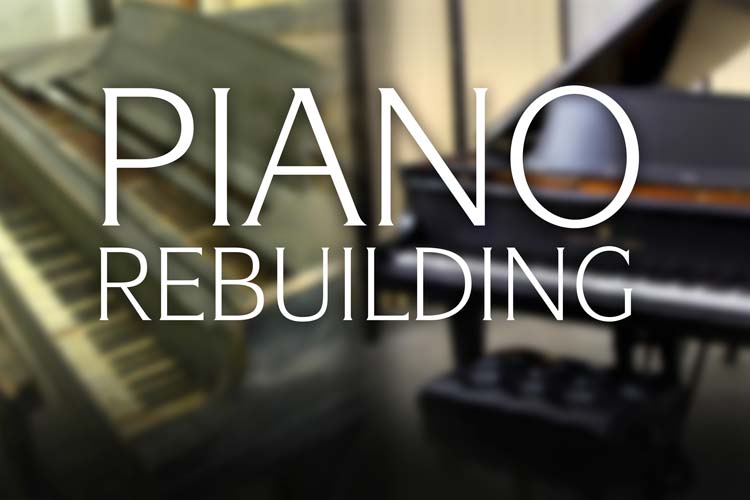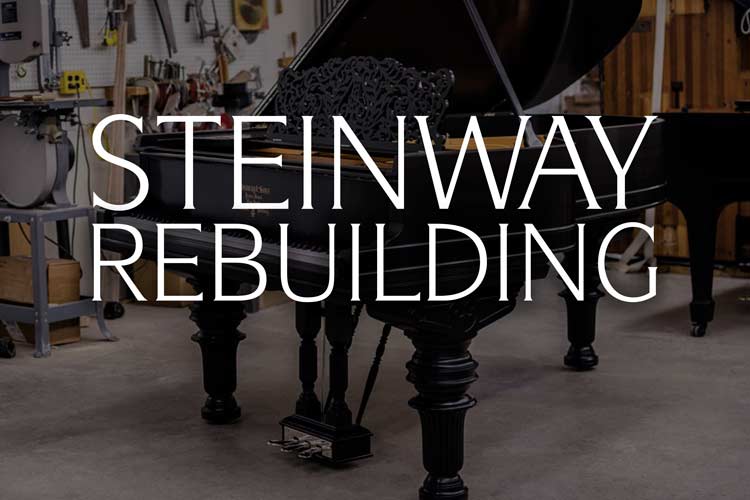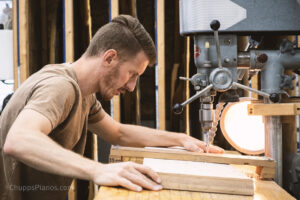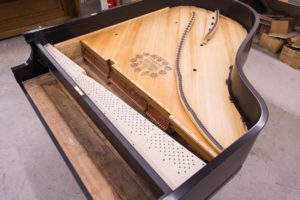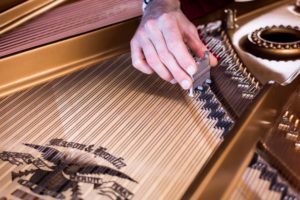The Pinblock | An Essential Component
A piano’s 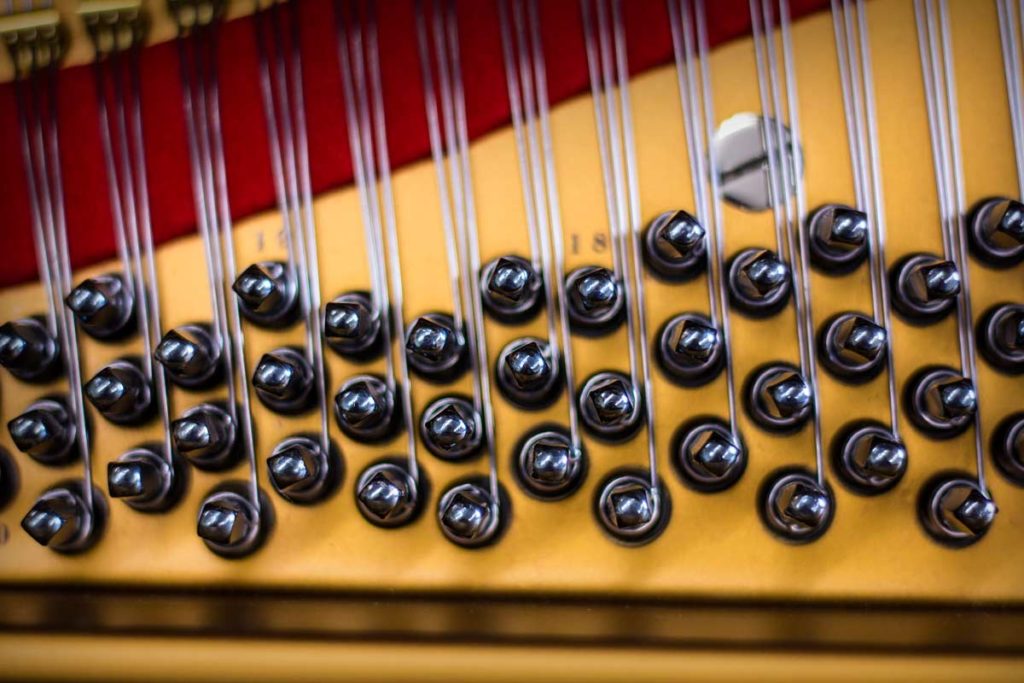 pinblock (also sometimes called a wrest plank) is a block of wood into which all of the tuning pins are driven. The piano’s strings are attached to these finely threaded pins near the keyboard end of the piano and to hitch pins on the plate near the tail. Precision craftsmanship is key – the quality of the pinblock is essential to tuning stability. Normally, the pinblock is fit snugly between the plate flange and the case.
pinblock (also sometimes called a wrest plank) is a block of wood into which all of the tuning pins are driven. The piano’s strings are attached to these finely threaded pins near the keyboard end of the piano and to hitch pins on the plate near the tail. Precision craftsmanship is key – the quality of the pinblock is essential to tuning stability. Normally, the pinblock is fit snugly between the plate flange and the case.
One of the most important parts of any piano, modern pinblocks are made from multiple layers of laminated hardwood. The wood utilized is usually hard rock maple. A craftsman will take these strips of wood and glue them together until reaching a thickness between 1 3/8” and 1 1/2”. Under incredible pressure, these laminated hardwood panels are then pressed and left to cure. Once cured, the sheets of material will be cut and drilled into finished pinblocks.
“We run the wood grain of the strips at different angles. This is because the wood expands and contracts, and by crossing the grain, the expansion and contraction cancel each other out. It provides more stability.” – Dennis Chupp
Constructed for Strength
A piece made of multiple hardwood laminations is much stronger than a solid piece of wood, and this strength is crucial. A pinblock must withstand over 40,000 pounds of string tension inside a ‘normal’ Steinway grand piano. A pinblock must be constructed to exacting tolerances if it is going to be stable and fit correctly.
The laminations also provide the opportunity to cross the grain. Again, this accommodates the natural expansion and contraction of the wood, which, left unchecked would cause the holes in the pin block to grow larger over time. This would seriously compromise the pin position and, consequently, the tuning. The cross-grain design helps grip the tuning pin tightly from multiple directions which aid in the stability of tuning. Stability and consistency are critical to the performance of the piano. Hundreds of holes for tuning pins are drilled into the block. These holes must be drilled with consistency and precision in order for a tight, yet easily tunable fit.
Precision Fitting
It is very important that the pin block is fit precisely to both the plate and the piano’s case. Once it is in place, the plate is lowered into the piano and the pin block is surrounded on all four sides. The plate is then secured into place with approx. 30 screws and bolts. If the pin block is not fit correctly, the stability of the tuning and the piano itself can be adversely affected. Unfortunately, we have discovered more than several new pianos that were shipped from factories with an almost non-existent fit between the plate and block.
Another reason the fitting must be precise is that the holes of the pin block must perfectly align with the holes in the plate. If they are not centered exactly, the pins will rub against the plate as you put tension on the strings. This greatly affects how long (or even if) your strings stay in tune.
Learn more about our exclusive Durablock Pinblocks - Offered directly to piano technicians
Affecting The Piano’s Downbearing
Because of its placement in relation to the plate, the thickness of the pin block must be correct. If the pin block is too thick, it will cause the plate to sit higher in relation to the soundboard bridges (which reduces the down bearing). If it’s too thin, it can create too much bearing which keeps the soundboard from vibrating freely, deadening the sound. This is just one reason why it is essential that a new pinblock be custom fit to the specific piano.
A piano will most likely be tuned dozens of times during its many years of service. Consistency, stability, and performance is expected from the pin block. When fabricated and fit correctly a high-quality pinblock can provide decades of precise use.
Chupp’s Piano Service | Steinway Piano Restoration | New Kawai Pianos | Expert Piano Service


